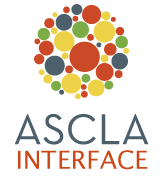By Carrie Banks, Brooklyn Public Library
According to the New York City Department of Homeless Services, 36,961 people�including approximately 19,838 children�were homeless in New York City on January 6, 2010. The number of people of all ages who are homeless in New York increased 15% over the last year. In this time of great need for so many people, libraries are well positioned to help.
Brooklyn Public Library (BPL) has a proud history of serving people who are homeless, and we are rising to this new challenge. Traditionally, BPL has provided deposit collections for shelters, worked with daycare programs at shelters and provided residents with information about all of our programs such as job placement assistance, literacy, and children’s programs. We have been sending Kidsmobile, our children’s and teen bookmobile, to shelters for at least six years. We also conduct workshops on library services and early literacy for shelter residents and staff. But we are always looking for new and better ways fulfill our mission of serving all Brooklynites.
In June 2005, BPL’s Child’s Place for Children with Special Needs began a partnership with New York Cares, an agency that mobilizes volunteers citywide, to implement Shelter Storytelling, a new model of service for BPL. New York Cares recruits volunteers to visit three family shelters one Saturday a month. These volunteers perform crafts with the children, bring them to the library, and then treat them to pizza. At neighborhood libraries, children’s specialists read to the children, make sure they have library cards and help them find books and the volunteers help them read. The children also get to choose Reading Is Fundamental (RIF) books to keep. Roughly 350 children were served by this partnership in 2009. BPL has increased the number of shelters we serve by two and the number of individuals by 274% in the most recent quarter. We are currently negotiating to add a fourth shelter with this model, bringing the total number of shelters served by the Child’s Place to seven.
The primary goal of the Shelter Storytelling program is to encourage families to come on their own to the library between the group visits. We hoped to see results within six months of the first group visit, but were pleased to see them within one month, when a mother and her son came to return books and take out new ones. We have received anecdotal evidence that individual children are reading more and doing better in school.
Another goal is to provide some much-needed stability in the children’s lives. These children live in temporary housing, often far from the neighborhoods they are familiar with, and have usually been to more than one school. Libraries are not an obvious recreational choice for children living in shelters, who often read below grade level. The Shelter Storytelling program helps introduce these children to libraries, which can serve as a constant in their lives, because wherever they go in New York City there will be a library nearby. We know from staff reports that families who have moved on from the shelters continue to use the library.
After we had been offering the Shelter Storytelling program for a year and a half, the children brought us homemade holiday cards. One child, who could neither read nor write, drew a picture of a snowman, a Christmas tree, me, a reindeer, and a fox. The fox had been featured in the story I had told the previous month. Darryl, a third-grader who was just beginning to read and did not yet write, dictated the following for his card.
“I thank you for letting us come to your nice library. My Name is Darryl. I want to have a good Christmas. My name is Darryl and I like your library. It’s special because I like going to libraries. It’s fun.”
As the number of children, families and individuals who are homeless has increased in Brooklyn, and in New York City as a whole, so has the demand for all types of social services, including library services. And we continue to get new requests. One more sits on my desk as I write this. Even as the economy continues to worsen, our history and mission leave us well poised to meet these needs.
